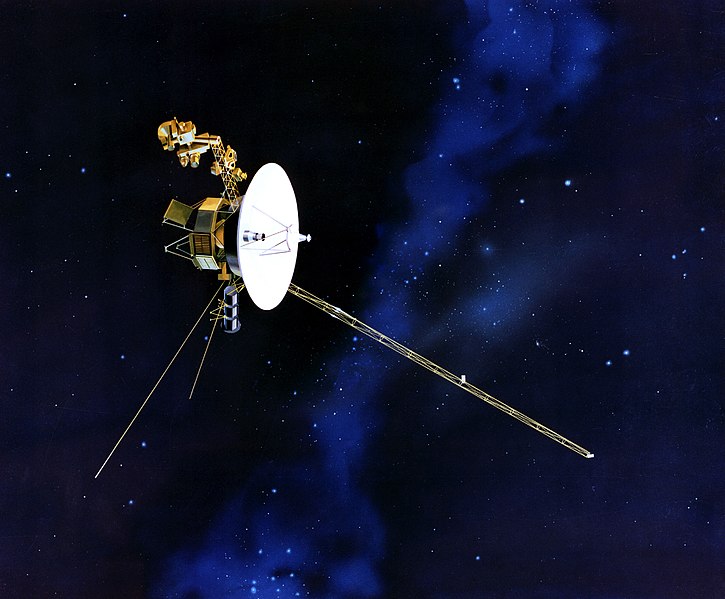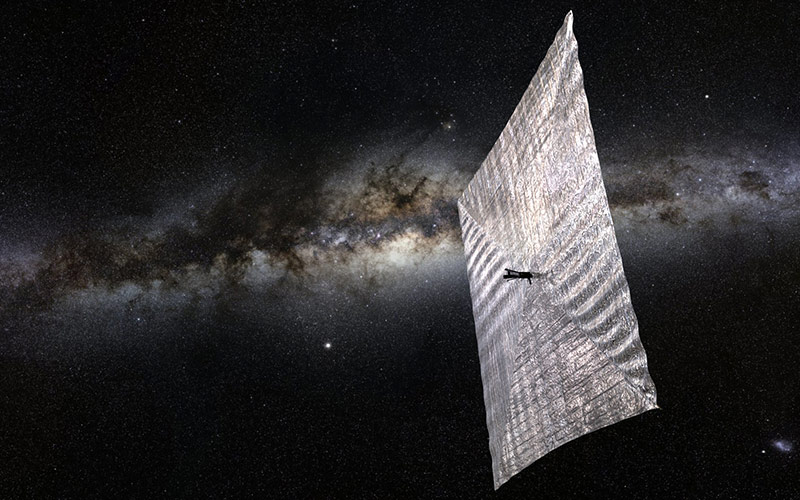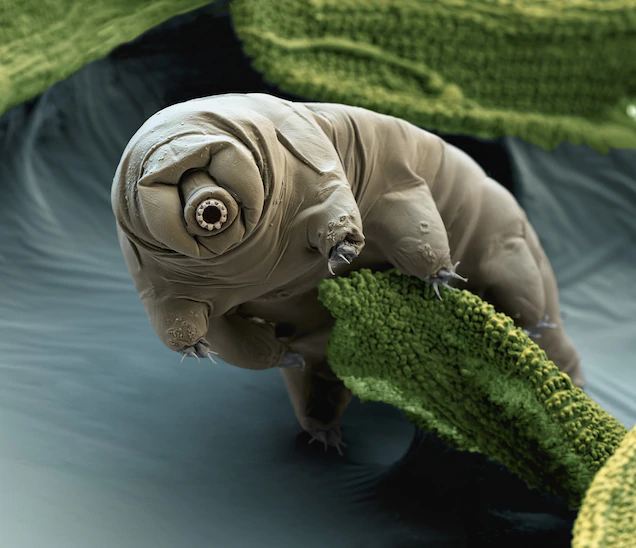The possibility of interstellar travel has crossed the boundaries of the “limited” world of science fiction. Although our generation has not been able to witness things that are technologically impossible at the present time, like engines to warp space for travel, science is already exploring the possibility of bringing life beyond the System. Sun, using current technologies.
Two UC Santa Barbara (UCSB) professors, Philip Lubin and Joel Rothman, have been waiting for years for the moment of truth. They are part of the generation that has witnessed the great advancements in space travel, bringing with them the optimism and creativity of the Space Age, when humans first learned they could leave Earth.

Yuri Gagarin, the first person to fly into space.
“The Apollo flights to the Moon were one of the most impactful events of my life, the recollection of it still makes me dizzy.,” said Rothman, professor emeritus in the Department of Molecular, Cellular and Developmental Biology.
Only half a century since the great event of that year, humans have accumulated a lot of knowledge about space, and the technology of travel has advanced much compared to before. That makes Mr. Rothman eager to collaborate with cosmologist Lubin, to find a way to put life on a light-year path. The two researchers recently published their report in the journal Acta Astronautica.
“I think it’s my destiny to keep studying” Mr. Rothman said. “Look at the history of mankind. We continue to explore small scales down to the subatomic level, but also discover even greater things. That urge has pushed us towards the relentless exploration that is inherent in human nature, existing as a species.“.
Big thinking starts with small curiosity
The biggest challenge of interstellar travel for humans is the distance between Earth and the nearest star. The Voyager mission demonstrates to science that spacecraft can break out of the heliosphere into interstellar space. However, the probe satellite was about the size of a car, flying at 61,500 km/h and took 40 years to get to where it is today.
It has only completed a very small part of the distance. In theory, it would take another 80,000 years to reach the nearest star.

The Voyager 1 probe was the first man-made object to fly into interstellar space.
Mr. Lubin’s research is focused on solving the way humans travel to the next star system, he wants to find a new technology that allows us to complete long distances. Certainly “primitive” fuel cannot help people achieve their dreams; The energy they provide is not enough to make the plane fly fast, and there are no engines efficient enough to make a long journey.
We need more advanced propulsion technology, and that’s when the team at UCSB decided to test light as a new “propellant”.
“This is unprecedented, to propel a macroscopic object at speeds close to the speed of light, ” said physics professor Lubin. The mass of “astronauts” is still too great an obstacle, which will prevent humans from visible future interstellar travel.
So the researchers focused on moving the robot and the light particle. Small probes with sensor circuits, which can collect and transmit data, will fly at 20-30% the speed of light, “fired” by light from the laser system. on Earth, or even on the Moon.

The technology of light sail travel only exists in theory.
Lubin said the propulsion system will not be attached to the ship, only used to shoot the probe into the distance. Moreover, the “launching” can take place continuously.
“Maybe just a semiconductor wafer wrapped around the edge to protect it from radiation as well as cosmic dust when traveling in space“, said Professor Lubin. “At first it will probably be by hand“. As technology progresses, ships will get larger, and the technology could even be used to transport people/life around the Solar System. A mission to Mars could only last a month, including stops along the way.
At relative speeds, which for us is about 360 million km/h, the small “probe” will reach our nearest star system, Proxima Centauri, in about 20 years. To reach this level, Professor Lubin believes that science must make a lot of progress in design “space travel chip”, at the same time strongly develop the growing optical industry.
Knowing the mass of these probes, Mr. Rothman realized they could carry living things. Animals belonging to the nematode branch, the scientific name C. elegans, which have been the subject of Rothman’s research for many years, suddenly have the opportunity to become worthy candidates for interstellar travel. “Research around this little animal has brought home six Nobel Prizes to date” added Mr Rothman.

The image shows an adult C. elegans. “Research around this little animal has resulted in six Nobel prizes to date,” added Mr Rothman.
C. elegans has had a lot of travel experience, when they went to the International Space Station ISS by space shuttle, even survived the tragedy of Columbia. Like the water bear candidate, roundworms can also go into a metabolic shutdown.
On board the interstellar spacecraft, a water chamber filled with ‘hibernating’ C. elegans can travel distances measured in light-years. Once there, scientists will wake them up from afar, then monitor the effects of cosmic radiation and interstellar travel on living tissue. Mr. Rothman said the experiment will open the door to understanding “the ability to remember learned behaviors after traveling at near-light speed, at the same time for scientific research “metabolism, physiology, neurological function, fertility and aging“.
“Most experiments performed on these animals in a laboratory setting can be reproduced when [C. elegans] space flight”, said Mr. Rothman, adding that this is the right time to “sThoughts on the design of the interstellar spacecraft“.
The spacecraft carrying people to another star system is only beautiful in the movies, can not exist in reality. With the frail state of humans, perhaps we will need a symbiotic system between machines and humans, or stronger life forms with better endurance than the current “version”.
“This is a multi-generational research program‘, said Professor Lubin. The next generation of scientists will continue to devote their knowledge to interstellar travel, improving spacecraft design as more technological breakthroughs arise.
Protect the purity of other planets and star systems
Human fate is still closely linked with the Solar System, humans are still vulnerable to the harsh extraterrestrial environment. But setbacks didn’t stop Lubin, Rothman and the team. The team of talented people from many fields raises many questions, both related to the physical “astronaut” and the ethical aspects of sending life forms into space. They even thought about incubating life in space.

Water bear, one of the candidates for interstellar flight.
“There are ethical issues surrounding protecting the planet” explained Mr. Lubin. Scientists are always careful in sterilizing the spacecraft, not letting Earth’s living creatures find their way to space, as well as ensuring aliens do not come here to settle.
At this point, the spread of life is not a concern, when it can be said that the ship has been sterilized when penetrating a planet’s atmosphere and generating a large amount of heat. In addition, small probes carrying C. elegans all make one-way trips.
There is also the alternative hypothesis, which holds that life exists in the universe, moving from place to place through space dust, meteorites, comets and many other celestial bodies, possibly even too far. sailing on probes from extraterrestrial civilizations.
Therefore, the act of seeding life on another planet will raise questions that are difficult to answer. There are certain controversies surrounding the alternative hypothesis, when it comes to the right conditions for life to exist on celestial bodies inside and outside the Solar System. Outer planets and asteroids may have been, are and can support life.
“Many people have pondered, published research on topics such as ‘whether the universe is a laboratory for some advanced civilization.‘,” said Professor Lubin. “That’s it, people are ready to talk about advanced civilization. Good question, but the answer would be even more intriguing. Right now, we’re just thinking about the question, not the answer“.
Sending people to another planet knowing they may not return also raises ethical questions. So what if we send microorganisms, or human DNA? These questions have existed since humans sailed, migrated, and perhaps the answers will gradually emerge when we are ready to hit the road.
“I think we shouldn’t, and won’t suppress, the desire to discover which is so entwined with our very nature“, said Mr. Rothman.
According to Phys
.
